|
I prefer the term 'North Africa and Southwest Asia' (NASWA) to 'the Middle East' (the region is only the Middle East from a Western European perspective but not, say, from a Chinese one). Nevertheless, despite its problematic title, this website is a very good source of poetry from the region, updated regularly with new entries. Any effort to celebrate the beauty and diversity of the cultures found in this region is to be encouraged at a time when they are under existential threat from violent extremists of all sorts, from inside the region and from abroad.
Here are the links: http://middleeasternpoetry.tumblr.com/ https://www.facebook.com/middleeasternpoetry
0 Comments
Casablanca I’m packing my bags and selling my furniture again
After two years it’s time to go home Not that I wouldn’t like to stay I haven’t grown tired of your endless cafés Palm trees Minarets Beachside juices Crazy taxi rides Fast deals Dreams of Paris New York Dubai Mecca… Silent Sufis Loud weddings Drums and beggars Loyalists royalists and football hooligans White walls Intersections tram stations train stations bus stations ports and airport You’ve been generous to me Kind Even caring sometimes A base for me to explore this holy country even more No I haven’t tired of you Casa I just have things I’ve got to do Back home Sure I could be critical Poverty humiliation crime impatience vanity and envy Plague you I know But I also know you are doing your blessed best And after you let me in As a son not as a guest I can’t separate myself from your warm noons and cold nights Broken sidewalks Slaughtered sheep heads roasting on charcoal and the smell of burning hair everywhere Stray cats Pushers Young women desperate to go up or get out Frightened boys inhaling glue And saints oh yes your saints All are mixed into my body now I am part of the problem and solution Casablanca you’ve become one of those cities I can never really leave Salam Alors que vous vous demandez
Si cette femme arabe a le droit de considérer Que ses cheveux font partie de sa nudité À couvrir par pudeur et pour préserver Sons sens de l’honneur Et de l’identité Ses sœurs sont attaquées partout Ses filles Ses fils Ses frères Sous pression Accusés De vouloir perpétuer Les supposées superstitions de leurs grand-mères Encouragés à cracher Sur leurs grands-pères J’ai connu des Arabes au moins par milliers Et je n’ai pas trouvé ces femmes soumises faibles et idiotes Que vous me décriviez Je n’ai trouvé que des femmes et des hommes sous pression Trop souvent sur le point d’exploser Toujours exposés à des indignités Quotidiennes banales incisives excessives C’est avec leurs vêtements qu’on fait notre lessive Ce sont leurs corps que traversent nos innombrables controverses Nos guerres froides chaudes financées libératrices impérialistes économiques et culturelles Ont excité leurs fanatismes Mis en danger les subtilités Et pourtant la nuance est toute Arabe Les arabesques et les broderies Les savants mélanges d’épices Le soufisme Tout est menacé Par l’intégrisme Le libéralisme Le néocolonialisme occidentaliste Les wahhabites sont votre miroir patriarcal Vous vous complétez Vous vous embrassez Vous vous embrasez Vous vous encouragez À détruire l’Irak la Syrie le Yémen Et votre viol pénètre masculinement l’Afrique De l’Égypte au Nigéria Mais restons concentrés sur les Arabes pour l’instant Qui vous étonnent tant De résister encore Après plus de 500 ans En refusant encore trop souvent De prendre pour unique modèle l’homme blanc Je sais en occident presque tout le monde Et depuis longtemps A adopté le modèle de la chapelle Sixtine Le Bon Dieu blanc barbu Touchant de son doigt viril Son lieutenant imberbe Pas de hijab ici Même les féministes sont tombées sous le charme de cette nudité musclée En occident que l’on soit blanc brun noir femme ou enfant Il faut aspirer à être égal disons pareil à ces hommes blancs Renaissants modernes divinement humanisés Et voilà que des femmes brunes et voilées Osent se différencier Jusque dans nos terres javellisées Nos tribunaux aseptisés Normal nos juges sont scandalisés Et nos journalistes fascinés À la vue de ces fichus Alors que moi à Casa je vois se refermer les forces divisées D’un grand sandwich mondialisé La tranche du haut est un Arabe occidentalisé Celle du bas un réformiste musulman violent Entre les deux trop de salade et de viande arabe Et au-delà Les dents d’un géant blanc The mausoleum of Moulay Ibrahim can be reached by car after a 90-minute drive south of Marrakesh, in the majestic High Atlas Mountains, whose snowy peaks are visible from the red city. Here is a quick biography of the saint followed by a gallery of photos I took during my trip there last Sunday. From Wikipedia, the free encyclopedia http://en.wikipedia.org/wiki/Moulay_Brahim Moulay Brahim or Moulay Brahim ben Ahmed Mghari (died 1661), also called Tayr Lejbel (Berber for 'bird of the mountain'), was a well-known Moroccan sufi saint. He was the grandson of Abdallah ben Houssein al-Hassani, who was the founder of the zawiya of Tameslouht, one of the greatest Zawiyyas in the region of Marrakech (founded ca. 1525). The zawiyya of moulay Ben Brahim was founded in 1628 during the reign of sultan Zidan Abu Maali in the village 'Kik', since called 'Moulay Brahim'. It lies a few kilometers to the west of Tameslouht. References
THE ROAD TO MOULAY IBRAHIM (photo gallery) And here is the mausoleum of Moulay Ibrahim: This is his daughter Lalla Mahla's tomb, in an adjacent room:
Last weekend, I visited the mausoleums of the seven patron saints (sab'at ul-rijal) of Marrakesh in the traditionally prescribed order. Here are some pictures as well as a basic bio for each saint quoted from the Made in Marrakech website. The poor quality of English seems to indicate that the author must be more comfortable in French. However, these bios should do the job for now since they provide the basic information concerning each saint. 2. The next five mausoleums are within the city walls. Next stop: Al-Qadi 'Ayyad. Basic bio: Also known as: Abou Al Fadl Ayyad ben Amer Ben Moussa Ben Ayyad Ben Mohamed Ben Abdellah Ben Moussa Ben Ayyad Al Yahsob or “Cadi de Grenade”.Origins: Yéménite, originally from Sebta. Education: Student of Abou Abdellah ben Issa, from Imam Abou Abdellah ben Hamdine, Abou Al Hassan ben Siradj and Imam Abou Al walid Ibn Rochd. Distinguishing features: He’s best known for learning Maleksime in the Muslim West. His love for the Prophet is evident in his work Al-Chifaa and his orthodox rigor earned him his saint title. Death: 1149 (544 in Hegira ) Buried: Near Bab Aïlen. 3. We now move on to Sayyidi Abu al-'Abbas al-Sabti. Basic bio: Also known as: Abou el Abbas Ahmed ben Jaafar el Khazraji.Origins: Originally from Sebta. Education: Disciple of Cadi Ayyad, Sidi Bel Abbas also struck up a close friendship with Averroes, with whom he shared his ideas. Distinguishing features: He lived for 40 years in a grotta under a hill in Gueliz, without ever entering the city. He spent his life caring for and protecting the weak and the blind. His Zaouïa is part of the Regraga pilgrammage. Died: 1205 (601 in Hegira) Buried: Buried at Sidi Marouk cemetary, near Bab Taghzout. 4. Sayyidi Ibn Sulayman al-Jazuli is the fourth stop. Basic bio: Also known as: Sidi Mohammed ben Slimane ben Said al Jazouli. Origins: Originally from Souss. Education : Il fut inscrit à la Médersa Essaffarine de Fès où il excellait dans les hadiths. <left in French on the website I am quoting. Translates as ''He went to the Essafarine Madrassa in Fes, where he excellend in hadiths.''> Distinguishing features: He’s the founder of Moroccan Sufism and moved againsts an Iberian invasion. He’s the author of the famous collection of prayers Dala’il al-Khayrat . He died while praying. Death: 1465 (870 in Hegira ) Buried: At the zaouïa Jazoulia in the north end of the medina, near Dar-el-Glaoui. 5. Sayyidi 'Abd al-'Aziz al-Tabba'. Basic Bio: Also known as: Abou Fares Abdelaziz. Origins: Silk merchant originally from Fes. Education: Key disciple of Sidi Ben Slimane. Distinguishing features: He spread spread Sufi morals through the artisan guilds. Death: 1508 (914 in Hegira) Buried: Buried near Ben Youssef Mosque. 6. Now, deep within the old city, close to the busy souks and the famous Jama' al-Fanaa Square (Jemaa El-Fna) , we discover the mausoleum of Sayyidi 'Abd Allah al-Ghazwani. Basic Bio: Also known as: Moul El Ksour Origins: Originally from the Gazoune tribe. Education: After having completed his studies in Fes, he went on to study in Grenada, before relocating to Marrakech to complete his training under Sidi Abdelaziz Tabaa. Distinguishing features: Sultan Sidi Mohamed Cheikh, incarcinated him in Marrakech, jealous of his positive reputation with the people. He was freed several years later. <I am quite sure the author meant 'incarcerated' here.> Death: 1528 (934 in Hegira ) Buried: He’s buried near Mouassine Mosque. 7. Back outside the city walls, in a cemetery near the royal palace is our last stop in the tour of the seven saints, the mausoleum of Al-Imam al-Suhayli. Basic bio: Also known as: Abou el kassim, Abou zaid Abderrahmane ibn al Khatib AbouAmer ben Abi al Hassan Asbagh ben Houssine ben Saadoun ben Redouane ben Fattouh Souhaili. Origins: Originally from Souhail, near Malaga. Education: Yacoub El Mansour brought him from Spain. Distinguishing features: He’s known for his Sufi poetry and his openness during a time of strong religious censureship. Students often gather around his grave. He’s written two masterpieces: one about the names of the Prophets cited in the Koran and the other a biography of Sidna Mohammed. Died: 1186 (582 de l’Hégire) Buried: He’s buried near Bab Robb. By the way, when I put more photos for certain saints, it in no way indicates any sort of preference. Sometimes, fewer photos turned out well. Now, while we are at it, here is a shot of the famous Koutoubia (Kutubia) mosque in Marrakesh: And here is a gallery with a few more random pics from this beautiful city:
I spent the evening in Marrakesh at a spiritual gathering with a group of disciples from the Habibiyya Sufi order. It was wonderful: a bit of qur'an recitation; some litanies and supplications; dhikr (invocation) of Allah and blessings on his final prophet, his family and companions; chanting; a short lesson; brownies, lemon pie and sweet mint tea... just wonderful! There were quite a few North American Muslims present, which gave the evening a nice cosmopolitan atmosphere as well. You know, this is my fourth time in Marrakesh and, every time I visit, I marvel at what a great little town it is. Especially at this time of year when it isn't too hot yet, it's just got so many things to like: beautiful architecture, fantastic landscapes, great weather, rich history, intense spirituality, excellent restaurants, exciting souks, haute couture, traditional crafts, street arts, and a whole range of activities for tourists, be they Muslim or not. OK, it's a bit commercial and decadent here and there, but in the end you get what you come looking for. Click here for an interesting article on Spanish Sufis. However, I would say there are many more Sufis than the 1,200 mentioned in the article, including many who are not Naqshabandis. For instance, all the Moroccans and Senegalese immigrants must include a number of Shadhulis, Qadiris, Tijanis and others.
Also, check out the related photo gallery. Right in the centre of bustling downtown Casablanca, two steps away from the port, is the sanctuary of Sidi Belyout, a traditional Sufi mausoleum.
I said, "For breakfast tomorrow, let's have eggs, slices of chicken, toast, oranges, milky coffee..." Sighing softly in the far corner of the room, she whispered, "If we are still alive in the morning." She has never been to school and can't read or write, but she is the scholar and I the careless novice. After all, I could very well be eating dirt and worms for breakfast. Praise be to Allah that there are still people like her around in this age of materialism and desires. |
AuthorTransdisciplinary scholar of Islam and Sufism. Archives
March 2023
Categories
All
|













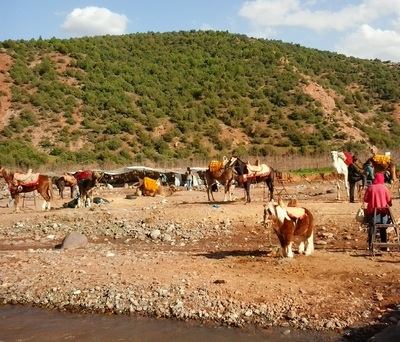






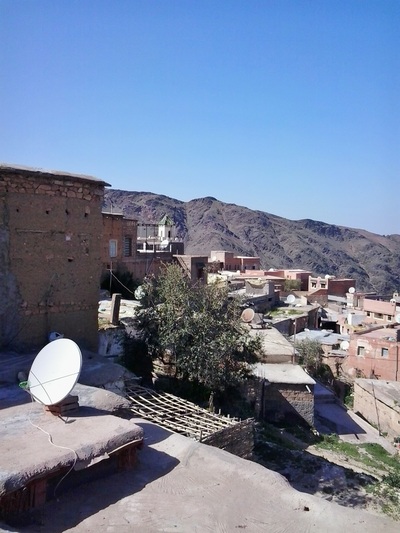
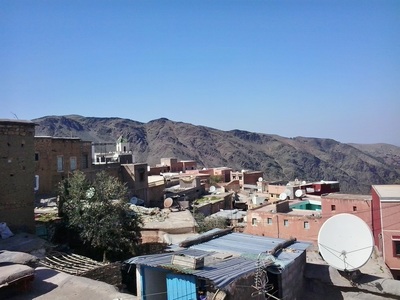

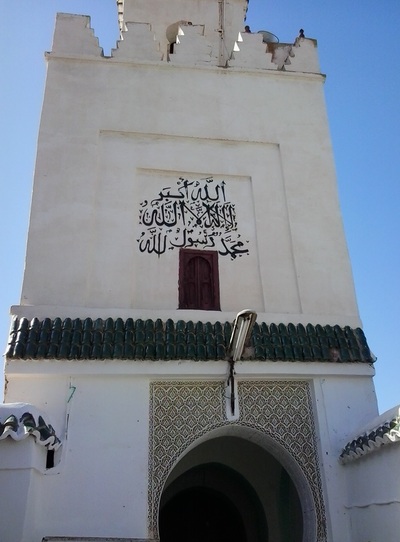












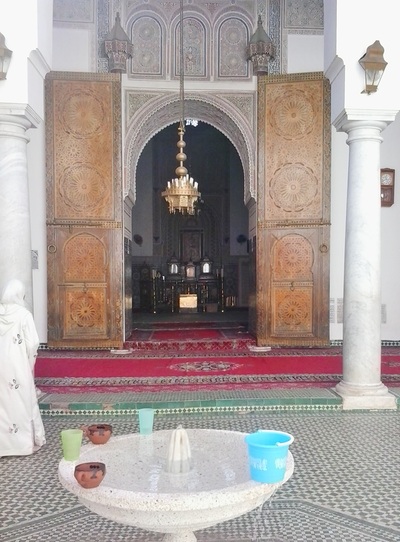

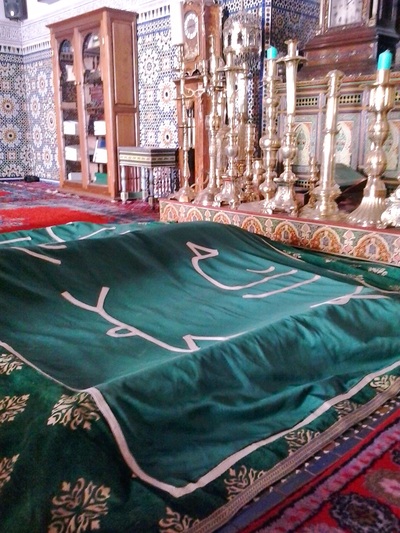




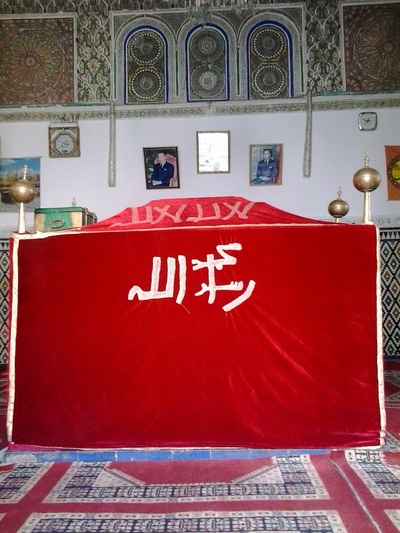






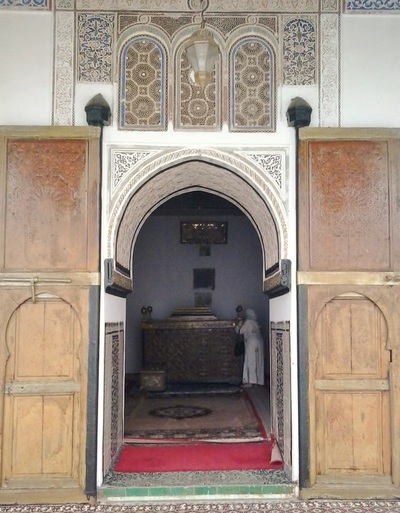




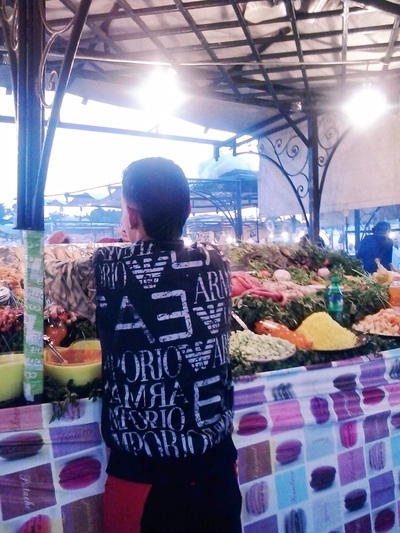




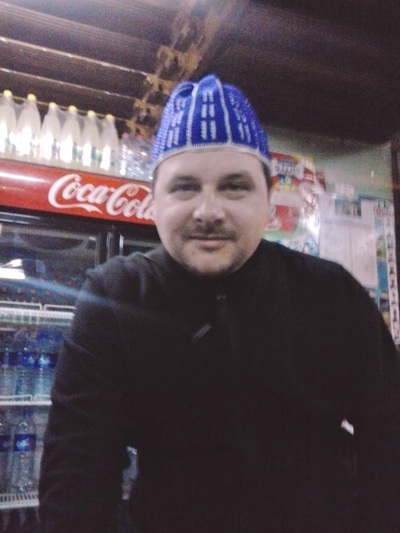





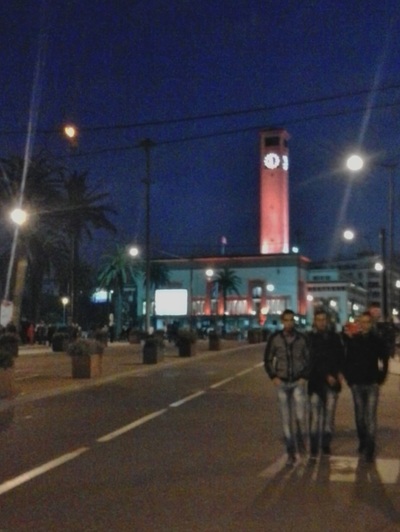

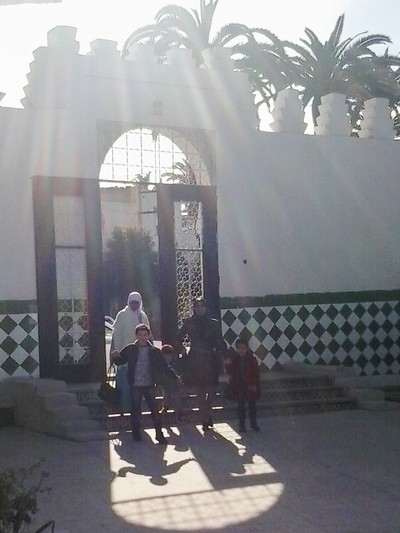



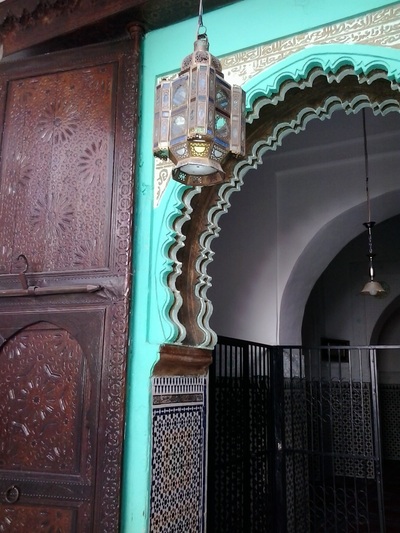

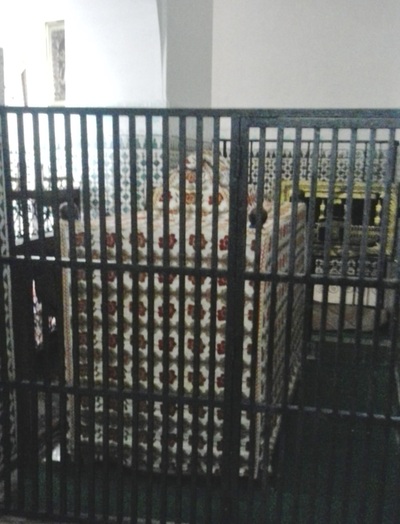

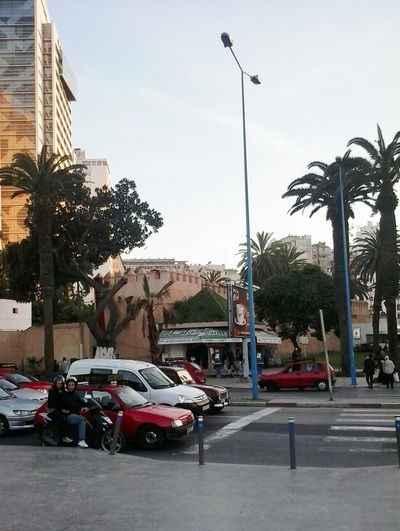

 RSS Feed
RSS Feed
